#turkic ethnic
Text
A "Common Alphabet Commission" has been established to accelerate the process of achieving language unity across the Turkic states and transition to a common alphabet. The commission will hold its first meeting in Kyrgyzstan.
Decisions were made at the "Turkic World Common Alphabet Workshop" held in Bursa month last month on the anniversary of Language Day, and these decisions will be presented to Organization of Turkic States (OTS).
The Turkic languages are a group of closely related languages that form a family within the Altaic language group that unites nations spread across three continents, according to the head of the International Turkic Academy.
Turkic languages are distributed over a vast area in Eastern Europe and Central and North Asia, ranging, with some interruptions, from the Balkans to the Great Wall of China and from central Iran to the Arctic Ocean.
The workshop was chaired by Turkish Language Association (TDK) head Gürer Gülsevin, with the participation of Binali Yıldırım, chairperson of the OTS Council of Elders and deputy chairperson of the Justice and Development Party (AK Party).
Within the scope of the workshop, the 2022 İsmail Bey Gaspıralı "Unity in Language, Idea and Work" Turkic World Literature Awards and Turkish Language Service Awards were presented.
Mustafa Öner, a professor of Turkic language and literature, discussed the history of the common alphabet in his speech. “First of all, we must not forget the path and slogan established by our great leader and intellectual of the Turkic world, İsmail Gaspıralı, we must not deviate from this path. Especially remember the 1926 Baku Turkology Congress. This date was the breaking point of the Turkic world. On the one hand, Stalin was tagging and murdering our intellectuals; On the other hand, the intellectuals of the Turkic world were looking for the transition to the Latin alphabet and the way to the world,” Öner explained.
In the workshop held in cooperation between the Organization of Turkic States and the Turkish Language Association, experts from Turkic states shared information about the alphabet and historical processes used in their own countries. It was emphasized at the event that the transition to a common alphabet should be accelerated and the application should be expanded.
At the workshop, the decision was made to establish the "Common Alphabet Commission" within the body of TDT to focus on a common alphabet for the Turkic world.
The commission, which will consist of two members to be proposed by the official institutions of the Turkic republics, will prepare a report on the common alphabet.
The commission will hold its first meeting in Kyrgyzstan and then present the common alphabet studies and report to the OTS Council of Elders.
President of Atatürk High Council of Culture, Language and History Muhammet Hekimoğlu and Hasan Hasanov, the Azerbaijani member of the OTS Council of Elders, also took part in the workshop.
0 notes
Text
i was reading the xenophobia and discrimination in turkey wiki and..

24 notes
·
View notes
Text
Tumblr pan-Turkists thinking Central Asia only has Turkic ethnic groups and were historically always Turkic. And if I said kay why ess, I’d be in the wrong apparently
#tater babbles#the exclusion of East Iranian ethnic groups is literally racist#considering how they all resisted turkification when the turkic ethnic groups came to settle in Central Asia#fuck off stop claiming everything is turkic you asses
3 notes
·
View notes
Text
The Controversy of Uralic Peoples as Mongoloids


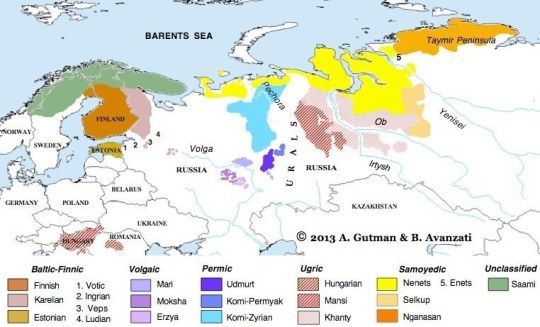

During the age of European nationalism, Finns, Hungarians, and Estonians have often had the concept of their Whiteness challenged. Some individuals have even gone out of their way to classify these three collectives as a part of the Mongoloid (East Asian) race. The strongest evidence for this claim had to do with linguistics. In the 21st century, many individuals only recognize language to be a fluid construct that has no indication of race. However, Europeans of the late 19th and early 20th century perceived language as an ethno-racial marker.
Some Western Chauvinists theorized that their shared identity of whiteness was partly ingrained in their common linguistic heritage. A broad language family identified as "Indo-European" is what loosely bound the white race together. The Finnish and Estonian tongues, however, are derived from the "Finno-Ugric" or "Uralic" language family. Because of this discrepancy, the Uralic peoples were considered Orientalized by their lack of linguistic kinship. In addition to a difference in language, certain Uralic populations also possessed physical features similar to that of East Asians. Most notably, ethnic groups like the Khanty and Mansi have pronounced epicanthic folds and maintain distinct linguistic ties with the Hungarians. These linguistic and phenotypic attributes indicated that, although the Finns, Hungarians, and Estonians appeared to be white Europeans, they were, in actuality, descendants of the Mongoloid race. These racial designations were not merely trivial ideological conflicts either. We see its impacts demonstrated when, in the United States, early Finnish immigrants were not considered white. In their book, Peter Kivisto and Johanna Leinonen note how a Finnish gentleman was denied American citizenship due to his Mongoloid origins.
This condescending view of the Finns was even shared by their fellow kin from Central Europe, the Hungarians. But why? Why would the Hungarians, a fellow Uralic-speaking people, deny any sort of linguistic/lineage tie with the Finns? This rejection is rooted in several factors tied to race, culture, and politics. In terms of politics, Hungarians have often tried to ease themselves into the sphere of pan-Turkism. This was especially prominent during the era of European nationalism when pan-Slavism was perceived as a threat to Hungary. In a reaction to Pan-Slavism, the Hungarians have often hearkened to their steppe ancestry as proof to be included as a part of a Turkic union. In addition to political factors, Hungarian history has instilled a strong sense of pride in their descent from hardened steppe warriors. The Hungarian nationalists envision themselves as the perfect syncretism of equestrian valor and . However, this romantic imagery is removed by asserting that Hungarians are related to the Uralic people. Uralic people, who were not steppe warriors, but lowly fishermen from the baron reaches of northern Europe.
The Nordicists sought to reinforce Hungary's shared origin with the Finns by emphasizing their cranial similarities. In his work Intra-Nordic Differences, Suvi Keskinen writes:
"Anders Retzius, Professor of Anatomy and Physiology,
developed a skull index to investigate “longskulls” and “shortskulls,”
coming to the conclusion that the Finns, the Sámi, and Hungarians
were to be placed among the Turanian type, understood as of Asian
origin"
Finland's history of being colonized by Sweden only added to the narrative that Uralic people were naturally meant to exist as subjugated people. This was in no way appealing to the Hungarians who sought independence from the Austrian Empire. This degrading portrayal of Finns as a subjugated and primitive race caused Hungarians to distance themselves from any sort of shared identity. In the book Languages and Publics, by Susan Gal and Kathryn Woolard, the authors note that a certain linguist was disgusted at the notion of having any sort of ancestral lineage to the Finns. In contemporary times, however, Hungarians have largely come to accept their place as members of the Uralic language family. Though others may stress the possibility of Turkic roots, one cannot deny the distant Siberian influence present across all Uralic peoples.
As the era of nationalism waned, the focus on race and ethnicity also diminished. The tumultuous aftermath of World War 2 prompted European nations to reconsider their relationships with neighboring countries. This shifting landscape gradually relieved the burden on Finns, Hungarians, and Estonians to constantly affirm their place within the Western sphere. The post-war period brought a nuanced perspective, allowing these nations a respite from the need to continually assert their Western identities.
Book Sources:
Kivisto, Peter, and Johanna Leinonen. “Representing Race: Ongoing Uncertainties about Finnish American Racial Identity.” Journal of American Ethnic History 31, no. 1 (2011): 11–33. https://doi.org/10.5406/jamerethnhist.31.1.0011.
Map Sources:
Morton, Samuel George. 1839. Crania americana or, A comparative view of the skulls of various aboriginal nations of North and South America. To which is prefixed an essay on the varieties of the human species. Illustrated byseventy-eight plates and a colored map., Philadelphia : J. Dobson; London : Simpkin.Marshall & co.
Map of human races (Meyers Konversations-Lexikon, 1885–1890)
#finland#finnish#magyar#hungarian#history#anthropology#nordic#uralic#linguistics#america#united states#sámi#europe#western civilization#maps#turkic#nomad#mongolia#asian#mongoloid#national identity#country#estonia#khanty#finno ugric#carpathians#ethnicity#hungary#european#suomi
5 notes
·
View notes
Text
What is the meaning of Hıdırellez for Turkic People?
HistoryTraditionsSignificanceConclusion Video: The UNESCO Cultural Heritage of Hıdırellez!You may also like
Hıdırellez, also known as Hıdrellez or Hıdrellez Bayramı, is an ancient spring festival celebrated in Turkic states, Iran, and some Balkan states. This festival is observed on May 5 or 6 every year and is regarded as a time of renewal and rebirth. In this article, we will explore the…
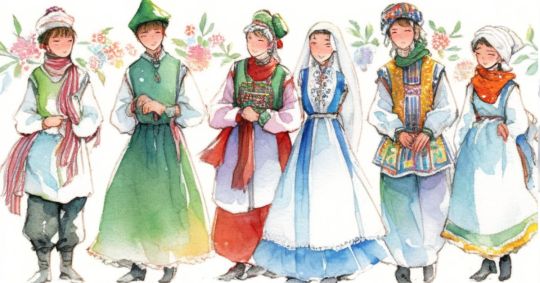
View On WordPress
#Celebrations and rituals#Central Asian culture#Cross-cultural exchange#Cultural significance#Ethnic identity#Festivals and traditions#Folklore and mythology#History and heritage#Hıdırellez#Turkic culture
4 notes
·
View notes
Text

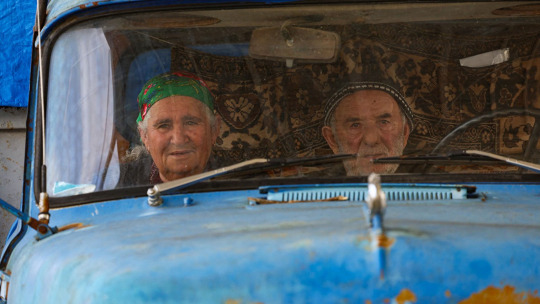

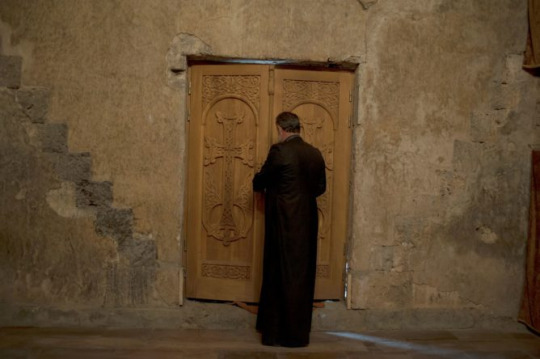
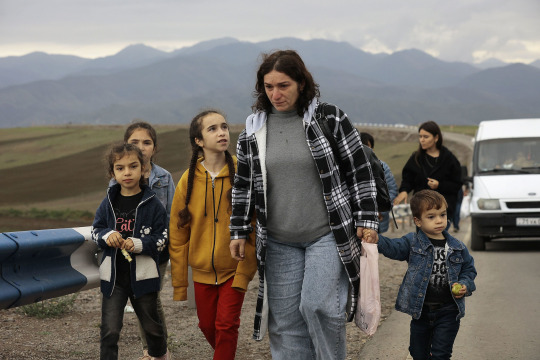

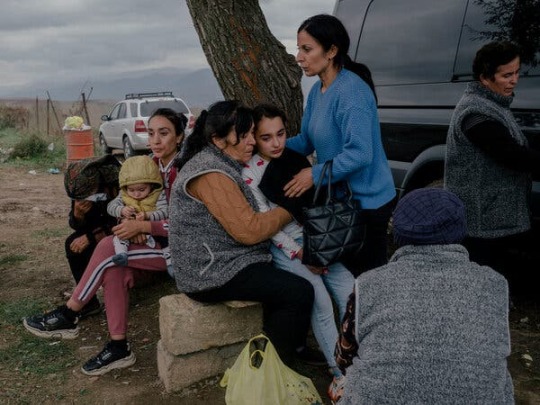



After being starved and imprisoned in blockade for months, 120,000 indigenous Armenians in Artsakh just faced mass deportation and ethnic cleansing at the hands of Azerbaijan, aided by their brother country Turkey and supplied military aid by a third genocidal country, Israel. Noting that in case my American friends think this is a small regional conflict-- guess who funds Israel?
Artsakh will be dissolved on January 1st, 2024 and for the first time in 3,000 years, it will be void of Armenians. Hard to put the pain into words. Turkey and Azerbaijan will not stop here, as pan-turkic doctrine claims all of Armenia as theirs. Armenian existence threatens the fabric of Azeri (and Turkish) national identity so it is no surprise they want to annihlate us again.
With the violent occupation of Artsakh, our ancient holy sites will be desecrated and our history rewritten while major news outlets will find pretty words for genocide like "conflict" or "war". No one will punish Azerbaijan's war crimes, no one will remember white phosphorous rain on our homes. And the perpetrators will continue to live a lie.
I think denial is a fragile basis for any relationship, to a person or to a land. What is built on a foundation of denial will break under enough tension, after enough time. I believe we'll be back someday.
And we are our mountains. I think they will always remember us.
5K notes
·
View notes
Text
A Quick Reminder
Palestine is going through a genocide/ethnic cleansing/colonization
Sudan is going through Genocide/Famine/War
In Congo the Children are being sold / the woman are getting sexually assaulted along with minors and impregnated/ Man are being slaved
Uyghurs, Kazakhs, Kyrgyz, and other Turkic Muslims are facing: possible genocide, forced abortion, forced sterilization, forced birth control, forced labor, torture in the north-western region of Xinjiang by china.
the Syrian Civil War is primarily rooted in a feud between Russia and the United States and their allies in the region over natural gas pipelines passing through Syria on their way to European markets, Vladimir Putin launched a full-scale military intervention in Syria to prevent the fall of their ally Bashar al-Assad and stop Syria from joining the Western sphere of influence = Syrian are dying everyday because of other people greed.
In Yemen 18.2 million people are facing famine/poverty/health diseases(cholera).
410 notes
·
View notes
Text

Tatars are turkic ethnic groups who live mostly in Russia. I'm a Volga tatar (from Tatarstan republic), so here's Volga tatar Miku (in traditional clothes and modern). National minorities 💪💪💪
#hatsune miku#miku#vocaloid#art#digital art#artists on tumblr#digital drawing#sketch#my art#tatarstan
152 notes
·
View notes
Note
what part of SA does kabru seem like he's from? i thought maybe nepal or India but idk
(To clarify for readers I think by SA they mean "South Asia."
Also this post is an excerpt/remix of the information in my essay about the real world linguistic and cultural references that exist in Dungeon Meshi. You can read Kabru's section of that essay here. You can also read a tumblr version of Kabru's section here.)
Kabru is the name of a mountain on the border between Nepal and India, so I agree with you, and I think he's from somewhere similar to both of those places! I don't believe any location in Dungeon Meshi is an exact copy of a place in the real world (Except Wa being Japan) so there's probably some other cultural elements mixed in there too.
I talk about this in detail in the Kabru section of my essay, in the chapter on Miscellaneous tall-men. I'll give an abridged version here, with some pictures, since this is tumblr, and I love nothing more than talking about Kabru lmao
Utaya (ウタヤ) is the name of the village that Kabru lived in until his mother’s death. It’s located in the southeastern part of the Western Continent, in an area that seems to be made up of arid mountains and cliffs, based on images in the manga, anime, and world guide.
(Utaya circled in red. As you can see it's around a mountain chain.)

Obviously the terrain information is anime-only, as Kui's map doesn't include this information... HOWEVER, Kui does give us POPULATION maps.

This is the combined population map my spouse made in 2023 to help us understand where the different races live. How does this help us?
In the real world, geographic barriers like rivers and mountains are usually what create the boundaries between different cultural groups. The person who made the anime map obviously knows this (or Kui told them) and they placed mountains and rivers based on where there are divisions between the races on Kui's map.
There's an ethnic enclave of gnomes and dwarves in the bottom east corner of the Western continent. There is most likely a serious mountain range between that population and the rest of the continent, since the World Guide says the Western Continent is dominated by elves, not dwarves or gnomes.
So, there probably ARE mountains around Utaya, in the manga, even though Kui hasn't explicitly told us so. So it's probably a region like the Himalayas, like Nepal, since those are some of the tallest mountains on earth.


These red cliffs Kabru is standing around in the first anime opening are likely meant to represent Utaya, since there is no place on the island or in the dungeon that looks like this. It's where Kabru comes from and what happened there is both vitally important to his character, and the Dungeon Meshi story as a whole, so it makes sense to foreshadow its existance in the OP.
Utaya (pronounced “uthaaya”) could be Hindi (उठाया) or Urdu (اٹھایا), but it’s also the name of a Yakut/Sakha village in Siberia (Утайа). So the village's name is either Hindi or Urdu (both Indian languages which are mutually intelligible) or Turkic. I think it's most likely the former.
The appearance of Utaya, especially the red cliffs that the anime has shown us, looks a lot like a remote part of Nepal called the Mustang District.




Mustang (मुस्ताङ) District straddles the Himalayas and extends northward onto the Tibetan Plateau. The district is one of the remotest areas in Nepal and is second in terms of the sparsity of population.
Geographically, Mustang is a cold, high-altitude steppe that is a part of the Tibetan highlands.
Upper Mustang (the northern part of the district) was once part of the Kingdom of Lo-Manthang, isolated from the rest of the world by some of the tallest peaks on earth. From the 15th to the 17th century, its strategic location granted the Kingdom of Lo-Manthang control over trade between the Himalayas and India.
We know that dungeons only grow large and dangerous if a lot of humans visit them, and dungeons that don’t have a lot of traffic tend to wither away. If Utaya was a trade hub that saw a lot of people and goods moving through it (lots of desire) like Lo-Manthang, it would make sense for a man-made dungeon to grow out of control there.
Being major trade hubs might even be something that Utaya and Merini have in common, since Merini was once the major port of entry to the Eastern Continent from the West. That may be part of why both of them grew such catastrophically dangerous dungeons.

Now obviously these houses are drawn REALLY roughly and without a lot of detail... But Kui generally doesn't seem to enjoy drawing houses so I'm not surprised. Nepal has both steepled and flat-roofed houses though, and villages that are built on the side of a steep incline aren't uncommon.




Additional reasoning:
In the Daydream Hour book, there is a comic about various characters presenting sweets from their home regions. Kabru attempts to share a dessert from Utaya that looks like white oblong balls on a plate.
These are probably an Indian sweet called rasgulla (literally "syrup filled ball"). Rasgulla are a dessert popular in the eastern part of South Asia (an area that includes the Himalayas), made from ball-shaped dumplings of chhena dough, cooked in light sugar syrup. Rasgulla are also popular in Nepal, where they are called rasbari.
The Nepal sky caves have a passing resemblance to parts of the Ancient cities that Kui shows us towards the end of the manga, where there are homes that look like they are built directly into cliff walls. Since Utaya had a man-made dungeon beneath it, there was probably an Ancient city located there... Just like these ancient ruins in Nepal.


The Ancient cities even more closely resemble Phuktal Monastery, a Buddhist monastery located in the Lungnak Valley in the Himalayan region of Ladakh, in Northern India. Phuktal is in a region very similar to Upper Mustang, on the border between North India and Tibet.





And finally, I think there's story significance to Kabru coming from a place like Nepal.
The way Kui describes dungeons and the villages that grow up around them are similar to real world gold-rush or boom towns. The ability for people to make a lot of money in a hurry, with very little initial investment, attracts poor and desperate people who use the dungeon as a way to lift themselves out of poverty. This transforms the local areas from whatever their normal lifestyle was into a service economy that is completely dependent on the unstable dungeon.
In the real world, a huge amount of Nepal’s economy depends on tourism in the Himalayan mountain range. Nepal is a very poor country, and working as a porter at Mt. Everest, a Nepali can make nearly double the nation's average wage.
The Himalayas are an extremely popular tourist destination, and the amount of people who want to visit and attempt to climb the mountains far outpaces the local ability to support it. This makes me think of the dungeon of Utaya, and the dungeon of Merini, and how people have overcrowded it in their desire to conquer and exploit it for economic gain and glory.
Dungeons as an unsustainable way for locals to make a living, that leads to the destruction of their homes when the dungeon inevitably collapses, is a major plot point in Dungeon Meshi, so I think the parallel is likely intentional. Characters often talk about someone “conquering” the dungeon, and “conquer” is also the terminology commonly used for climbing a mountain.
This phrasing obviously has a hostile, imperialist subtext in the real world, since it’s most commonly used by outsiders talking about proving their strength by climbing a mountain in some exotic, foreign place. I think it has the same subtext in Dungeon Meshi. People want to assert themselves by proving they are stronger than the dungeon.
187 notes
·
View notes
Text
Broke: Turkey is 4000 years old and existed in the form of the Turkic Khaganate
Woke: Turkey is, at oldest, the Ottoman Empire because that was when the identity of the Turkish nation, culture, and people became set in stone
Bespoke: Turkey was a tiny pipsqueak running around for a bit as one of the many Turkic tribes that migrated west before eventually inheriting the power of Seljuk and becoming the Ottoman Empire, so he is old, but he doesn't stretch as far back as the Turkic Khaganate since that's the origin of all Turkic nations and making Turkey the single sole representative of the Khaganate ignores the other Turkic identities and groups that developed from the Khaganate as well. The Turkic Khaganate also does not completely represent the ethnic makeup of Turkish people nowadays, as well as the ethnic makeup of other groups like Tatars and Kazakhs due to interactions with Persia, Mongols, and other Europeans. The reason why Turkey's perceived to be old is most likely his "old man fit" which is really just how any Turkish dude in Turkey dresses
#hetalia#hws turkey#aph turkey#sadik adnan#tokki writes#here's my take on the “TURKEY IS OLD!!!” vs “HES NOT THAT OLD!!” opinions lately
146 notes
·
View notes
Note
Sorry if my question was uncomfortable, but I'm a foreigner and would like to understand more about the "feud" between Greece and North Macedonia. I've seen (heated) discussions between Greeks and Macedonians about culture, but I don't know much about the context. Again, sorry if the question is uncomfortable or insensitive.
I think this Geography Now! video does a good job of explaining the controversy. Basically, the Greek position is that since Slavs came a thousand years after Alexander in the area, and the culture and language of North Macedonians are largely Slavic it's illogical for them to name their country after a Hellenistic kingdom and claim many Greek figures, and also Alexander the Great, as people from their culture.
For clarification, Alexander the Great was certainly Greek and he spoke the Macedonian dialect of Greek which was Doric (for reference the Spartans also spoke the Doric dialect). When North Macedonians say "he was Macedonian" they mean he was from their culture and he spoke their language, and he wasn't Greek.
North Macedonian history tends to confuse the administrative regions with culture and ethnicity because it's convenient to them. It doesn't matter if Kyrillos and Methodios were two Greek brothers from Thessaloniki. To N. Macedonians, because these two brothers were in a region that was occasionally the administrative region of Macedonia, they were "Macedonians", hence "from North Macedonia". To them it doesn't matter that Alexander's birthplace and all important cities of the Hellenistic Macedonian Kingdom are in Greece.
What is crucial to understand about this controversy is that Macedonia for a long, long time, was basically "a geographical region of many mountains". The Greek word Μακεδονία literally means "Mountainous Region", and because it's kind of a distinct region it was a district on its own many times. That's an approximation of the limits of "Macedonia" as a geographical region with distinct characteristics.

Below is the ancient Greek kingdom of Macedonia. However, the people who are now residents of N. Macedonia won't be here for another thousand years!
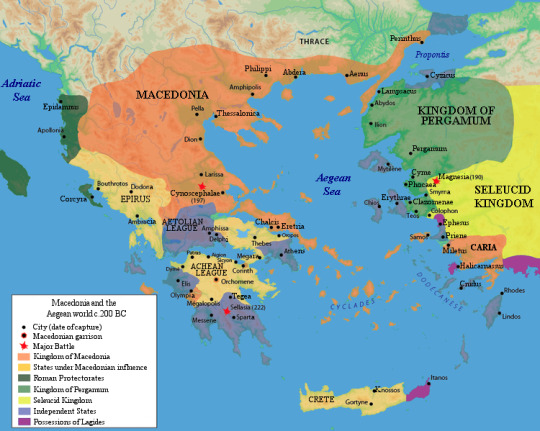
The guy in the video says the Macedonian kingdom expanded, but then he doesn't say that it was separated into more kingdoms for better governance, and one of those kingdoms was this controversial region (in Green) which is now part of Greece and North Macedonia. (Slavs were still not in the area)

When Romans conquered these kingdoms they also separated the area into administrative regions. The province of Macedonia within the Roman Empire, circa 125 (Slavs were still not in the area):

Later administrative departments of Roman empire (Slavs were still not in the area). In fact, "Provincia Macedoniae" changed almost at the time the Slavs arrived, in the 7th century.
Within the Eastern Roman Empire there was later separation into Themata, but now the department of Macedonia was moved to the West, occasionally including parts of the region where N. Macedonia is today. (Slavs in the area after 7th c. ACE)
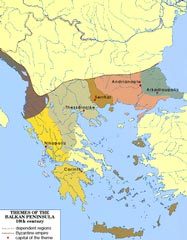
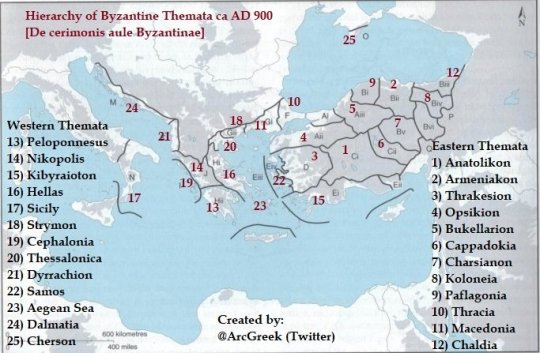

Theeeen came the Turks, and separated the regions differently. Now everyone, Turks, Greeks, Slavs, Hebrews and whoever else lived in that region, are all part of the same "millet", the Rum Millet. "Macedonia" wasn't an administrative area then.

In the 19th century, Turks and Slavs were the majority in the region of Macedonia, with Greeks coming third population-wise, and Hebrews also having very large communities.
(Greeks might not like this fact, or they may ignore it completely, but if you open actual historical books and maps, you'll see the demographics. We have censuses from that era. I learned the old Slavic and Turkic names that villages and places in my region had. There's also a reason Kemal Ataturk's mother wrote to him "They took our Salonik" when Greeks reclaimed the city after 600 years. We can still love our country and appreciate our history, without erasing parts of it.)
In 1912, the largest part of the region of Macedonia was claimed by Greeks. In time more Greeks came to it as immigrants from Anatolia and other Greek regions, shifting the population in such a way that Greeks were now the majority. (North Macedonia still doesn't exist as a country)
In 1991, when the country of North Macedonia was created, Greece already had an administrative region of Macedonia which covered most of the Macedonian geographical area, also the ancient Greek cities of the kingdom, and the emblem of Greek Macedonia was the ancient Greek Macedonian star. The Vergina Star, and the ancient Greek city of Vergina is also in Greek ground today. (Our Emblem and Flag)
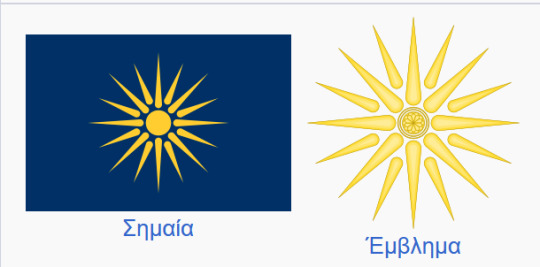
So you can imagine it came as a shock to Greeks when a newly founded country used not only their symbols, but also distinctly Greek symbols. People who are now residents of N. Macedonia lived in the geographical region that a few centuries ago was also "Macedonia" in the administrative sense, so I get where they're coming from. However, when culture gets appropriated, when the culture of important ethnically Greek figures is erased, when Greek words are claimed to be "Macedonian" all of a sudden since 1991, things get tense.
It's a political matter, as the video says. People from the two countries usually have normal interactions if the matter doesn't come up. And I don't think there's hate between the simple people.
#I am not in the mood for a debate I just wanted to explain stuff#make your own post if you want to let off some steam against Greeks :P#answered
67 notes
·
View notes
Photo

The Chuvash (Russian: чуваши) are a Turkic people, related to the Oghurs, who are native to a region extending from Central-Western Russia to Siberia.
Many live in Chuvashia and ethnic communities throughout Russia, and continue to speak Chuvashi language, which diverged from other Turkic languages over a thousand years ago.
They have been subjected to much outside influence, not only from Russian and Turkic peoples, but also from neighbouring Finnic tribes, with whom they have been wrongly identified for centuries.
Today, many Chuvash practice a syncretised form of Orthodox Christianity and Shamanism.
Traditional clothing of Chuvash women is complex and varies greatly between regions. A distinctive feature is the rich ornamentation of headdresses and jewellery with decorative silver coins. The most unusual feature is called shulkeme - the breast adornment worn by a young married woman.
The full set of jewellery a Chuvash woman would wear during the ceremony could weigh up to 16kg. Traditionally, the size and weight of the jewellery displayed the wealth of the bride's family and was a fundamental part of her dowry.
The traditional headdress of a married Chuvashi woman is called khushpu.
It is worn over the surpan, a strip of white fabric with embroidery at the ends.
The khushpu pictured here is one of the oldest and rarest in existence, dating back to the 18th Century.
📸 Alexander Kimushin
300 notes
·
View notes
Text
Pan-Turkism has been characterized by pseudoscientific theories known as Pseudo-Turkology.[64][65] Though dismissed in serious scholarship, scholars promoting such theories, often known as Pseudo-Turkologists,[64] have in recent times emerged among every Turkic nationality.[66][67] A leading light among them is Murad Adzhi, who insists that two hundred thousand years ago, "an advanced people of Turkic blood" were living in the Altai Mountains. These tall and blonde Turks are supposed to have founded the world's first state, Idel-Ural, 35,000 years ago, and to have migrated as far as the Americas.[66]
According to theories like the Turkish History Thesis, promoted by pseudo-scholars, the Turkic peoples are supposed to have migrated from Central Asia to the Middle East in the Neolithic. The Hittites, Sumerians, Babylonians, and ancient Egyptians are here classified as being of Turkic origin.[65][66][67][68] The Kurgan cultures of the early Bronze Age up to more recent times are also typically ascribed to Turkic peoples by pan-Turkic pseudoscholars, such as Ismail Miziev.[69] Non-Turkic peoples typically classified as Turkic, Turkish, Proto-Turkish or Turanian include Huns, Scythians, Sakas, Cimmerians, Medes, Parthians, Pannonian Avars, Caucasian Albanians, and various ethnic minorities in Turkic countries, such as Kurds.[69][70][71][67][68] Adzhi also considers Alans, Goths, Burgundians, Saxons, Alemanni, Angles, Lombards, and many Russians as Turks.[66] Only a few prominent peoples in history, such as Jews, Chinese people, Armenians, Greeks, Persians, and Scandinavians are considered non-Turkic by Adzhi.[66]
Philologist Mirfatyh Zakiev, former Chairman of the Supreme Soviet of the Tatar ASSR, has published hundreds of "scientific" works on the subject, suggesting Turkic origins of the Sumerian, Greek, Icelandic, Etruscan and Minoan languages. Zakiev contends that "proto-Turkish is the starting point of the Indo-European languages".[66] Not only peoples and cultures, but also prominent individuals, such as Saint George, Peter the Great, Mikhail Kutuzov and Fyodor Dostoevsky, are proclaimed to have been "of Turkic origin".[66] As such the Turkic peoples are supposed to have once been the "benevolent conquerors" of the peoples of most of Eurasia, who thus owe them "a huge cultural debt".[66][72]
The pseudoscientific Sun Language Theory states that all human languages are descendants of a proto-Turkic language and was developed by the Turkish president Mustafa Kemal Atatürk during the 1930s.[73] Kairat Zakiryanov considers the Japanese and Kazakhgene pools to be identical.[74] Several Turkish academics (Şevket Koçsoy, Özkan İzgi, Emel Esin) claim that Zhou dynasty were of Turkic origins.[75][76][77][78]
what is going on with the turkish
341 notes
·
View notes
Text
Why i see Jason Todd as Central Asian:
Both Batman and him thought Lady Shiva could be his mother, suggesting he has asian features because like come on, Batman the greatest detective in the world. These are possible all over Eurasia (e.g. the Sami people have similar features) but is more common in Asia (for obvious reasons)
He has red hair which he dyes. While natural red hair can be found all across Asia (usually through mutation and in very small percentages), the Asian ethnic groups with the most chance of having red hair are: Uyghurs and Tajiks. These two ethnicities are a mix of Central Asian ethnicities (with Uyghurs being a mix of Central Asian, Turkic and Mongolian ethncities and the Tajiks being Afghani)
#jason todd#batfam#batfamily#tajik jason todd my beloved#my post#red hood#batman#dc comics#batman comics#detective comics#central asia#red hair#dc batman#dcu#dc universe#dc#dc robin#dc jason todd#jason todd robin
69 notes
·
View notes
Note
Hey, I saw your post about that one Wikiproject that's basically trying to get rid of the notion of indigeneity on Wikipedia.
I have some more groups people might want to check. I'm not a member of any of these groups, nor to I have enough knowledge of them to actually verify anything on their pages.
In Europe:
Basque
Karelians
Veps/Vepsians
Catalans
Galicians
The Samoyedic Peoples
Komi
Crimean Tatars and Karaites
Krymchaks
Silesians
Sorbians
Circassians
There are so many in Asia, I could not name them all in one ask. Here are some:
Bai
Yamato
Hui
Tibetans
Turkic peoples
Manchus
Ryukyuan
Ainu
Zhuang
Mongolic peoples
Persians
Kurds
Assyrians
Armenians
Azerbaijanis
Mandaeans
Tazidis
India alone has so many different ethnic groups.
People should also check the central Asian countries.
Passing this to those able and interested in doing this research
35 notes
·
View notes
Text
Qarai Turks: What is their significance in Turkic culture?
Origins and NameResurgence in KhorasanDeclineQarai Turks TodayConclusionYou may also like
The Qarai Turks, a small Turkic minority historically inhabiting Iran’s Khorasan region, specifically Torbat-e Heydarieh, have played a significant role in Turkic culture. This article explores their history and importance.
Origins and Name
Qarai Turks originate from Central Asia and can be found in…

View On WordPress
#Celebrating the cultural significance of Qarai Turks#Cultural contributions of Qarai Turks in Turkic heritage#Exploring the heritage of Qarai Turks in Turkic culture#Influence of Qarai Turks on Turkic language and customs#Qarai Turks history#Qarai Turks: A unique Turkic ethnic group#Qarai Turks: Guardians of Turkic traditions#Qarai Turks: Preserving Turkic identity and heritage#Significance of Qarai Turks in Turkic traditions#Turkic culture and Qarai Turks
1 note
·
View note